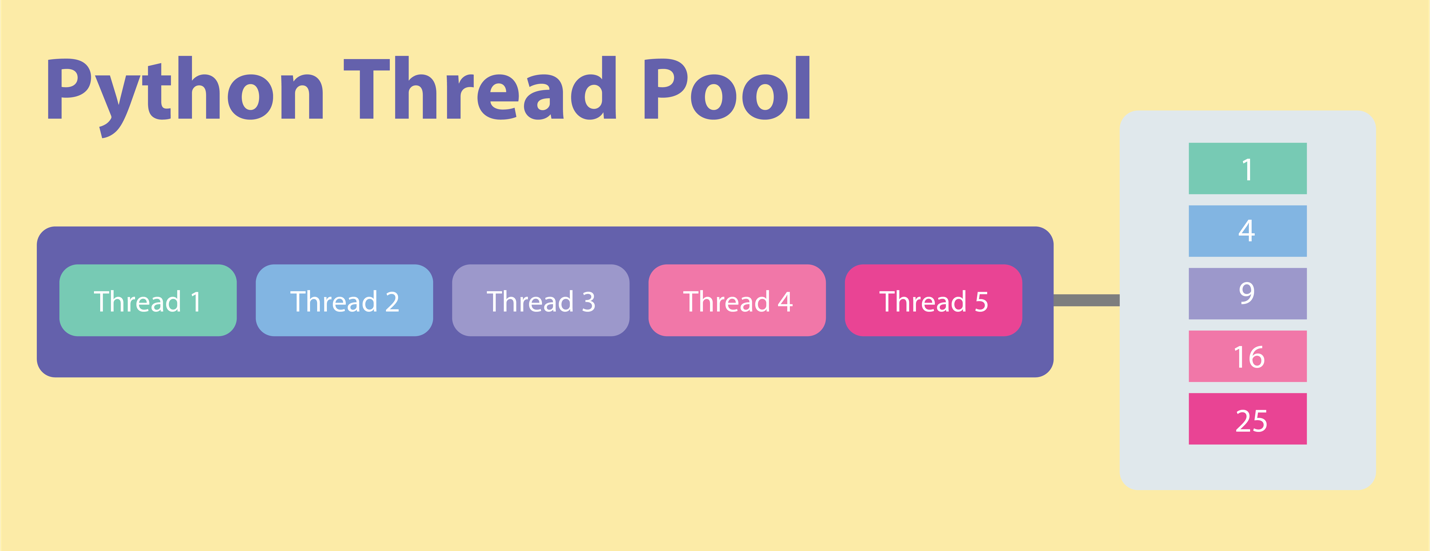Modern software development relies heavily on concurrency since it makes it possible to carry out numerous activities at once. A thread pool executor is an essential tool for managing concurrent execution of tasks, enhancing performance and resource utilization in multithreaded programs.
This article aims to present a nuanced understanding of the thread pool executor.
What is a Thread Pool Executor in Python?
The thread pool executor in Python is a robust mechanism that efficiently manages threads, allowing developers to effectively parallelize their programs. With its ability to handle task scheduling, thread creation, and resource allocation, the thread pool executor is invaluable in achieving optimized performance.
Key Features of Thread Pool Executor
The thread pool executor is a high-level abstraction built on top of the threading package in Python. Its primary features include a fixed-size thread pool, an intuitive task submission interface, automatic task scheduling, and a clear separation of task execution from the management of the underlying thread pool.
Utilizing a fixed-size thread pool prevents resource exhaustion and overloading by distributing tasks evenly among the available threads.
Syntax
Below is the syntax of the thread pool executor:
In this syntax:
- The “max_workers” parameter refers to the number of Threads or pool size. Min (32, os.cpu_count() + 4) is the default value starting with version 3.8. Five of these threads are kept around for tasks that need I/O.
- From Python 3.6 onwards, the “thread_name_prefix” parameter was added to give threads names for simpler debugging purposes.
- Each worker thread’s “initializer”, which accepts a callable, is called at the beginning of the thread. The initializer receives a tuple of arguments in the initargs parameter.
The “ThreadPoolExecutor” class from the “concurrent.futures” module is used to build a thread pool. Look at the below code snippet:
# Create a ThreadPoolExecutor with 4 worker threads
with concurrent.futures.ThreadPoolExecutor(max_workers=4) as executor:
# Submit a task for execution
future = executor.submit(some_function, arg1, arg2)
# ...
In this block of code, the “executor” class is extended by the “ThreadPoolExecutor” class, which returns a future object.
Thread Execution Methods
Three asynchronous thread execution methods are provided by the “ThreadPoolExecutor” class, as follows:
- submit(): Sends a command for a function to run, then returns a Future object. An asynchronous function is executed by the “submit()” method.
- map(): Executes a function asynchronously once for each iterable element.
- shutdown(): Turns down the executor.
When a new instance of the “ThreadPoolExecutor” class is created in Python, the “Executor” is started. After dealing with a resource the executor is holding, you must explicitly call the “shutdown()” method to release it.
An object called “Future” is used to represent the end outcome of an asynchronous action. The “Future” class offers the following two practical approaches:
- result(): It returns the outcome of an asynchronous operation with the result().
- exception(): If an exception occurs during an asynchronous action, use the “exception()” function to return the exception.
How to Execute Tasks with the Thread Pool Executor
Given below is the code to execute tasks with the thread pool executor:
def square(a):
return a ** 2
with concurrent.futures.ThreadPoolExecutor(max_workers=2) as executor:
futures = [executor.submit(square, i) for i in range(1, 6)]
results = [future.result() for future in futures]
print(results)
In the above code, define the “square()” function which determines the square of a given number. Using a list comprehension, establish a ThreadPoolExecutor with two worker threads and send out numerous tasks. The results of each task are obtained from the “futures” objects using the “result()” method, which then stores them in a list. Lastly, print the results.
Output
This outcome implies that the square of the numbers in the specified range is computed accordingly.
Conclusion
The thread pool executor in Python offers a powerful and flexible solution for concurrent programming, providing developers with efficient resource management, seamless task scheduling, and simplified error handling. By leveraging the thread pool executor, developers can achieve substantial improvements in performance, scalability, and responsiveness, making it a vital component of modern software systems.


